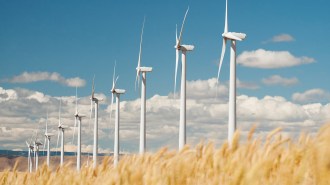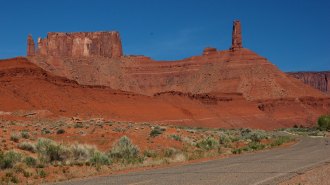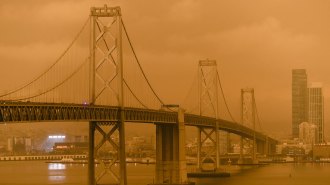Search Results

The Road to Net-Zero
Human activities pump a lot of greenhouse gases into the atmosphere, and those emissions are driving climate change. In this guide, students will review greenhouse gases and their sources and learn about ways to reduce emissions.
How to make the future climate-friendly
Students will answer questions about the online Science News article “It’s possible to reach net-zero carbon emissions. Here’s how,” which explores various solutions to decrease greenhouse gas emissions. A version of the article, “The road to net-zero,” appears in the January 28, 2023 issue of Science News.
Diagram the way to net-zero greenhouse gas emissions
Students will review, discuss and diagram atmospheric greenhouse gases and their impact on Earth. Then students will analyze a graph to begin thinking about what it will take to achieve net-zero emissions. Learning Outcomes: Reviewing greenhouses gases and their impact on Earth, diagramming human impact, understanding the idea of net-zero emissions.

Climbers Help Scientists Vibe With Utah’s Rocks
In this guide, students will learn about a citizen science project that is helping scientists better understand the physical properties of rock formations. Students will then explore other citizen science projects that they could participate in based on their hobbies and interests.
Joining forces for rock science
Students will answer questions about the online Science News article “How climbers help scientists vibe with Utah’s famous red rock formations,” which describes how researchers teamed up with rock climbers to collect data that can help assess the seismic stability of red rock formations in Utah. A version of the article, “Climbers help scientists vibe with Utah’s rocks,” appears in the April 23, 2022 issue of Science News.

Wildfires May Boost Urban Ozone Levels
In this guide, students will explore chemical interactions within wildfire smoke and how urban air pollution can influence the reactions.
Chemistry of wildfire smoke
Students will answer questions about the online Science News article “Wildfire smoke may ramp up toxic ozone production in cities,” which explores new research into the interactions between wildfire smoke and air pollution in cities. A version of the article, “Wildfires may boost urban ozone levels,” appears in the January 15, 2022 issue of Science News.
Where there’s smoke, there’s science
Students will discuss the composition and properties of air and wildfire smoke, and explore how substances in smoke react to ramp up a certain type of air pollution.
Get to know your local geology
Students will learn about plate tectonics, research the geologic and tectonic history of their region or state and analyze geologic maps to understand how plate tectonics shaped the landscape.
How a scientific theory is born
Students will discuss the development of the theory of plate tectonics to determine how scientific theories are created.
Earth on the move
Students will answer questions about the online Science News article “How the Earth-shaking theory of plate tectonics was born,” which explores how scientists formed the theory of plate tectonics. A version of the story, “Shaking up Earth,” can be found in the January 16, 2021 issue of Science News.
Create a recipe for life
Students will research the conditions necessary for the formation of organic molecules and living things. Working in groups, students will then develop a “recipe” for life based on physical, chemical, geological, astronomical and biological principles. Class discussions will cover the role of interdisciplinary research in studying the origins of life on Earth and searching for life beyond our solar system.